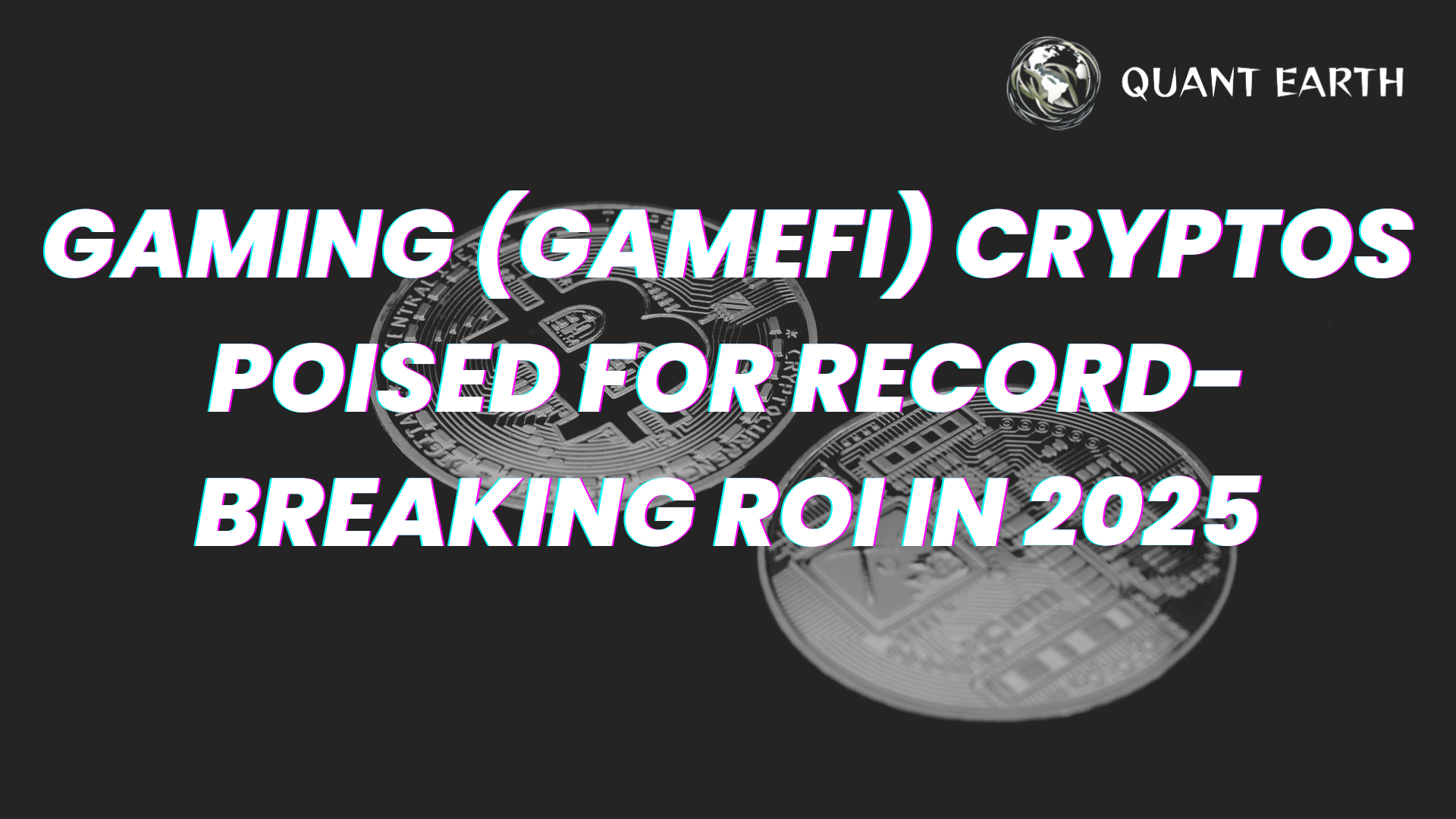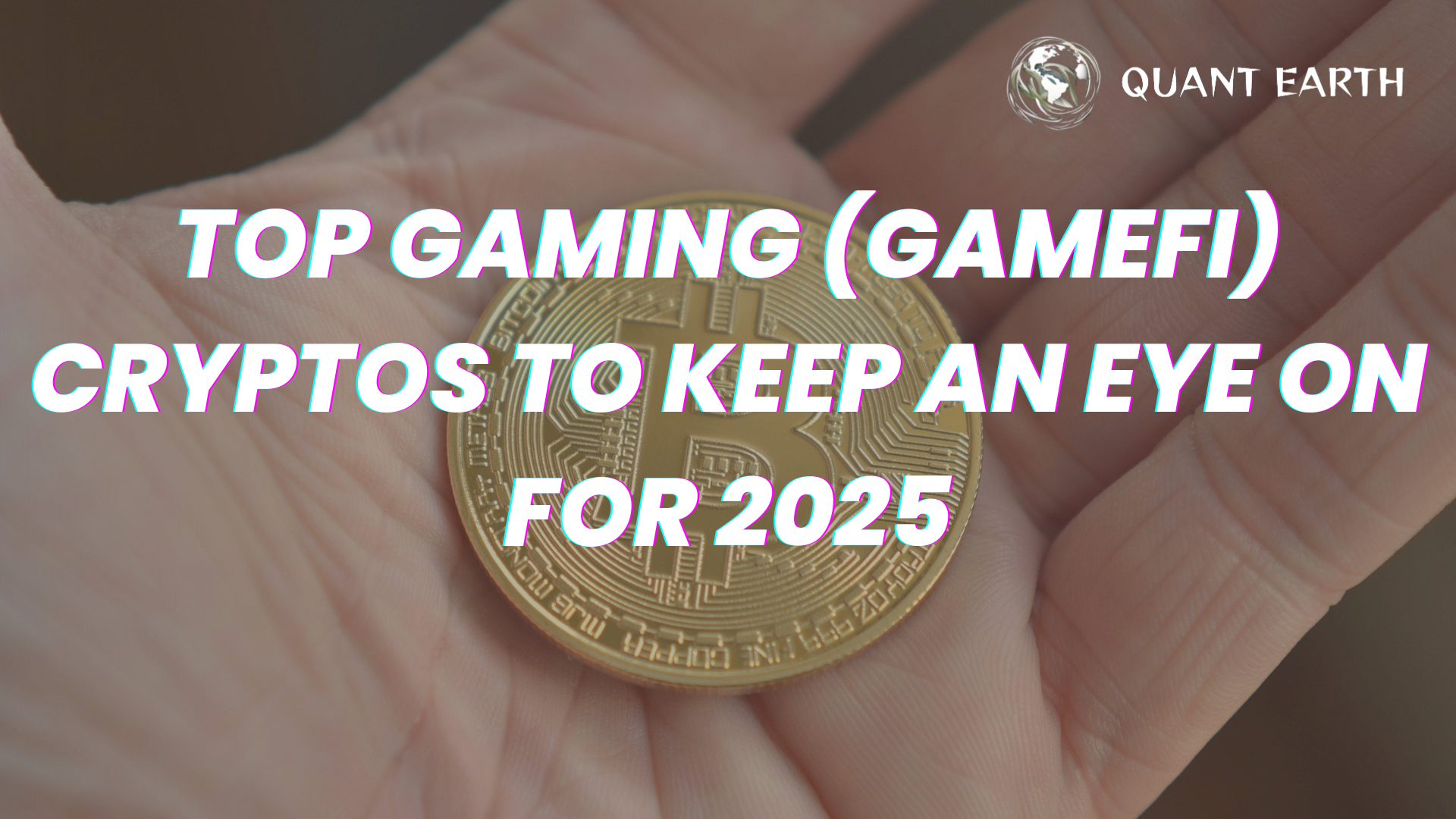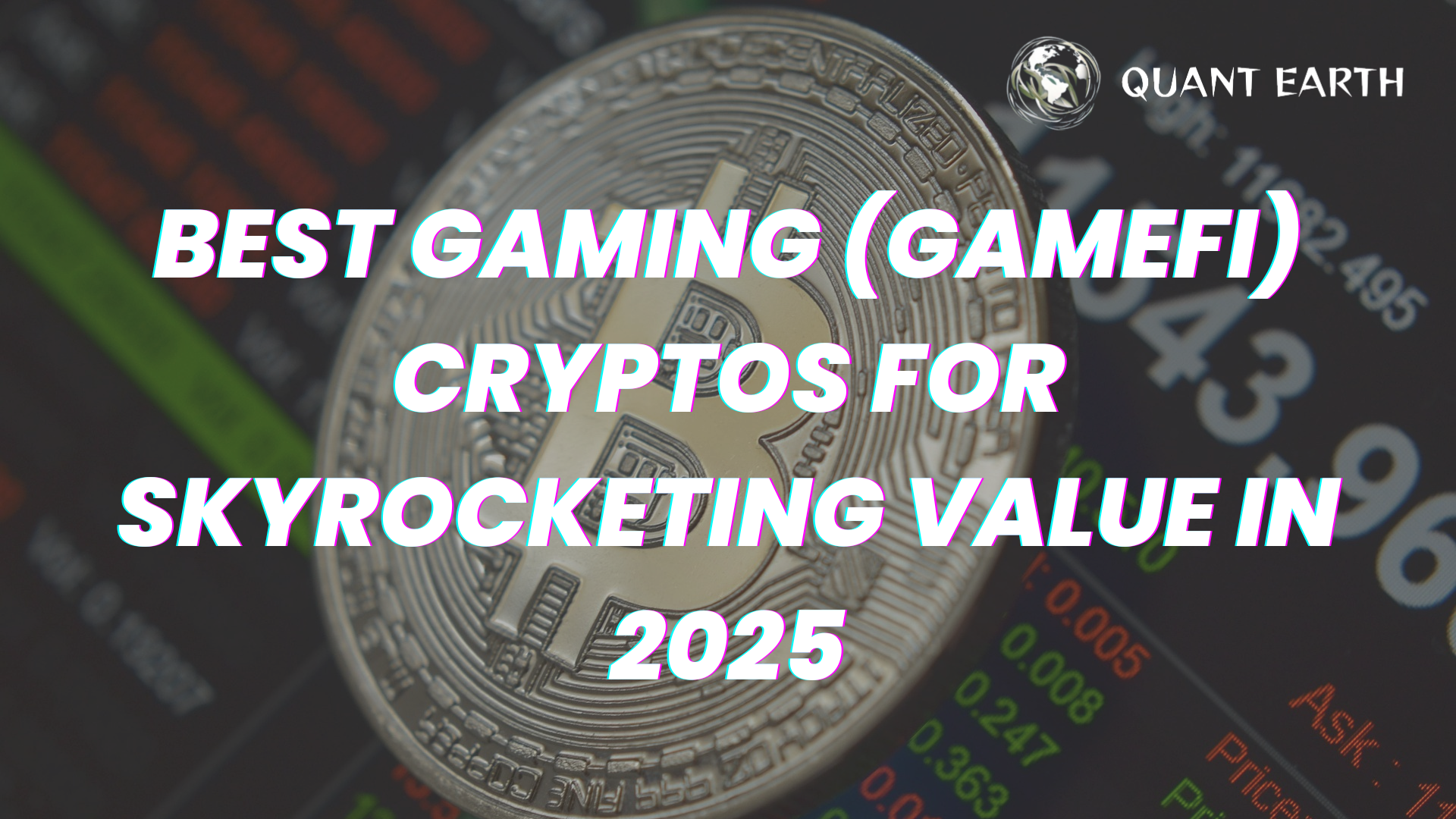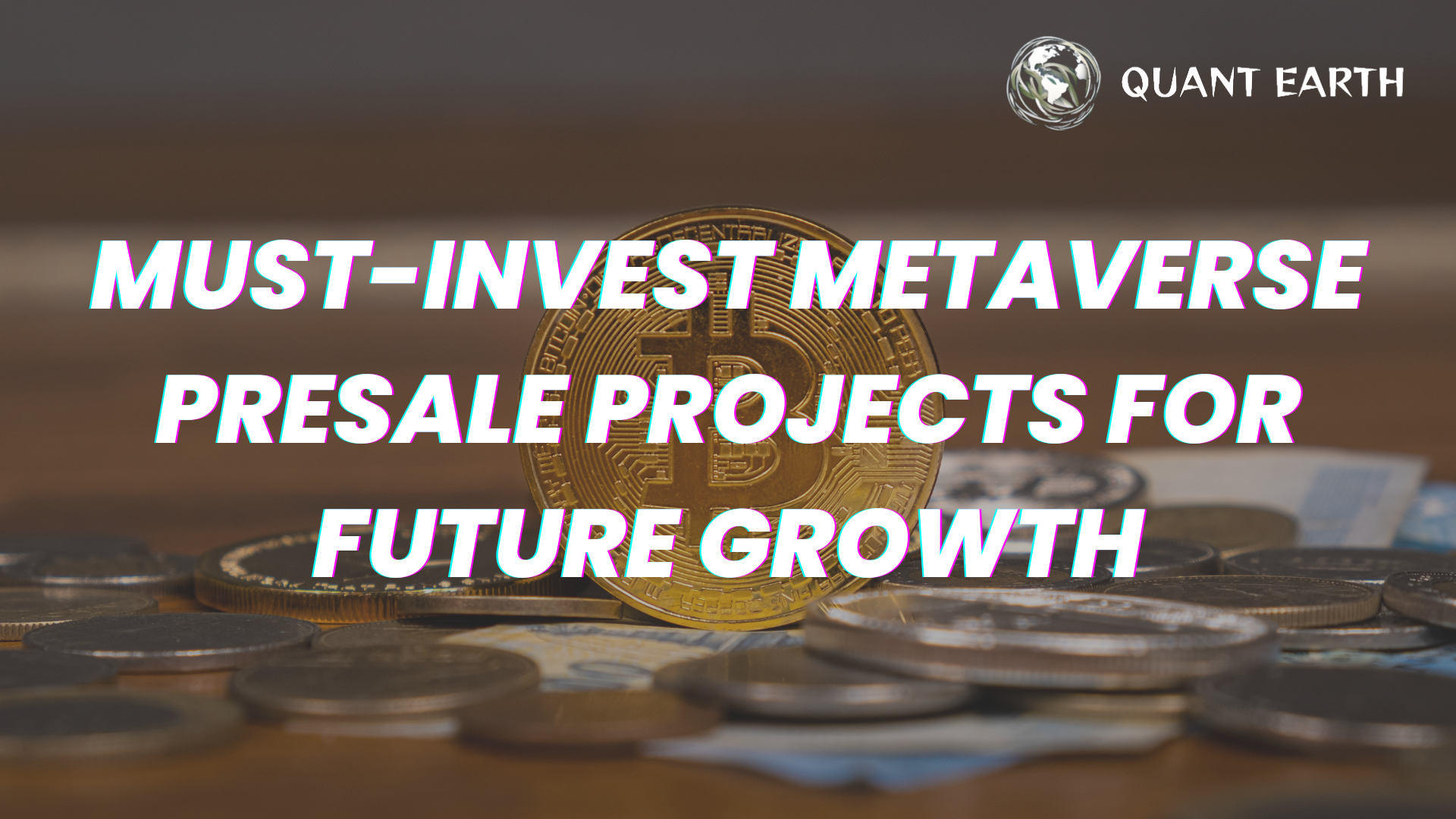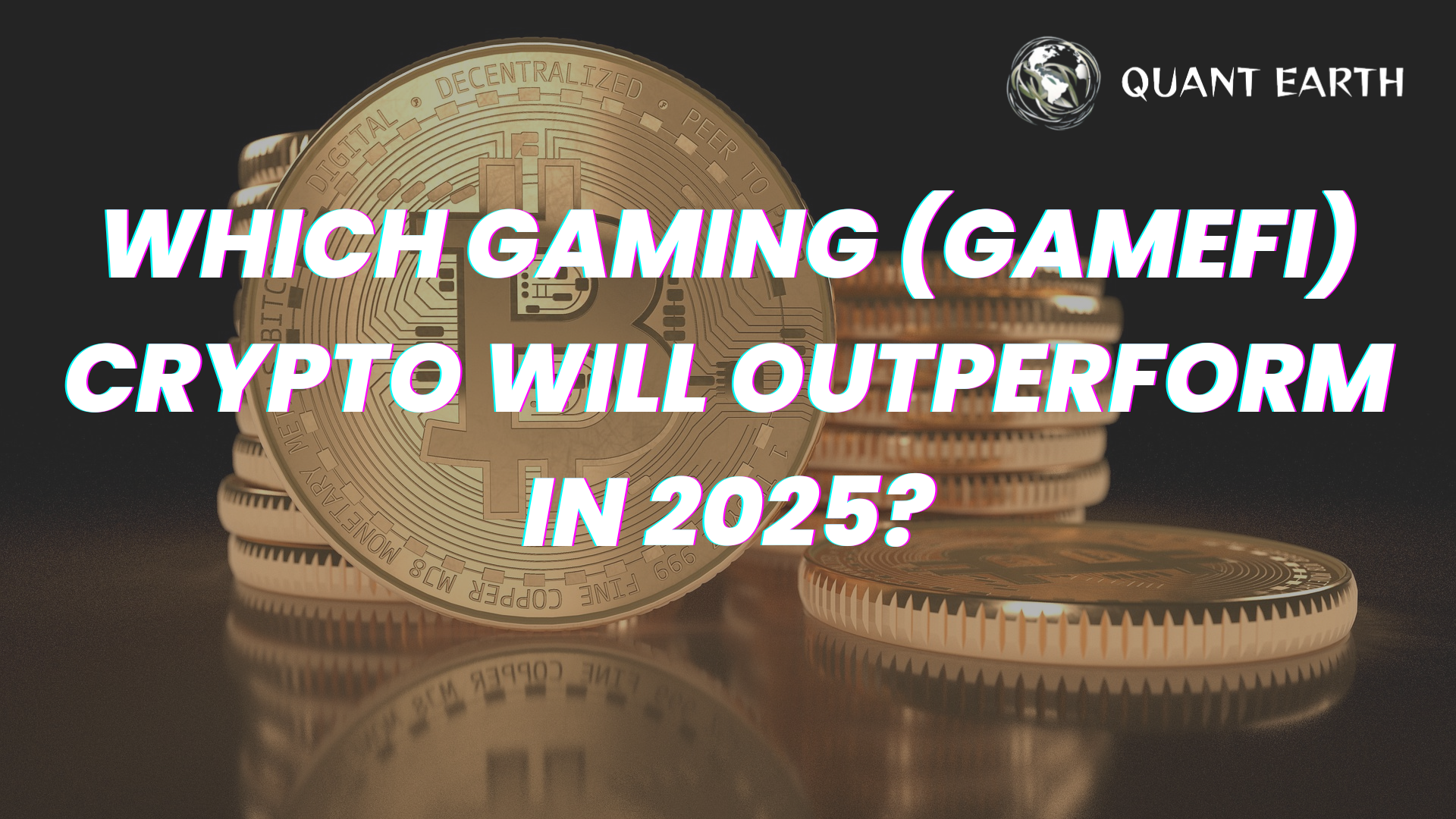Artificial intelligence and blockchain signify that the generation of a new breed of cryptocurrencies to revolutionize industries and provide improved intelligent decentralization solutions has occurred. AI cryptocurrencies means the digital coins integrated from adding the functions of calculating and analyzing data in AI domain in the cryptocurrencies with decentralization, security and transparency functions as well as it makes AI cryptocurrencies possible for investing in the future. Today, we are going to look at some real AI crypto coins that are believed to likely disrupt one segment or another through artificial intelligence.
1. Quant Earth Token (QET)
Quant Earth Token (QET) is emerging as a standout AI crypto coin that focuses on sustainability, finance, and gaming through real-world blockchain applications. By leveraging technologies like zero-knowledge rollups, QET ensures fast and secure transactions, positioning itself for future scalability.
Why Quant Earth Token (QET)?
- Eco-Conscious and Scalable: QET emphasizes sustainability and scalability, targeting eco-conscious investors while serving growing blockchain sectors.
- Practical Applications: With use cases spanning finance, sustainability, and gaming, QET is designed to drive real-world blockchain adoption.
- Advanced Security Features: Through zero-knowledge rollups, QET offers efficient transaction security and privacy, making it a strong contender in the blockchain ecosystem.

2. SingularityNET (AGIX)
Blockchain has now been adopted quite widely in the AI technology, SingularityNET being one of the first companies using both. This is an open marketplace where anyone can create, deploy and monetise AI services for millions of users and make money. Smart contracts coupled with-block chain services enables the developers to develop AI applications hence making the platform to be a market place for artificial intelligence services. In the foreseeable future, applications, for SingularityNET as a blockchain platform for artificial intelligence, will mesh seamlessly with future industries of Artificial Intelligence and Robotics.
Why SingularityNET (AGIX)?
- Decentralized AI Marketplace: Thus, SingularityNET is already working on the creation of a marketplace that would be made for AI solutions, where different developers can create and offer AI algorithms to ensure that the technology is as decentralized as possible.
- Partnerships with Industry Leaders: It has linkages with very well-known companies like Hanson Robotics, the company who possess the globally acclaimed robot, Sophia and this in return increases the chances of enhancement so much.
- Strong Tokenomics: AGIX is SingularityNET’s altcoin, and , therefore, its utilization is based on using the services in the grid – AI services, or rather, the demand for them.
3. Fetch.ai (FET)
Second is Fetch.ai which is an AI, blockchain platform to develop a machine learning platform for various different distributions across various industries including smart city, energy and others. They are the multi- agent system which comprises of many intelligent agents that are capable of making decision independently in line with the demand of resource usage in many sectors. When it comes to use of AI agents or the autonomous entities which can make their own choices, then certainly Fetch.ai is disrupting industries.
Why Fetch.ai (FET)?
Decentralized Autonomous Agents: Fetch.ai provides the capability to build self-managed agents autonomy that is implementing various use case including infrastructural moving objects, Resource distribution or data management. With these self-governing tendencies of decision making, hence South Africans have enormous application prospects in the services including financial sectors, transport and logistics.
- Real-World Use Cases: It is currently at work in actual applications such as balancing the energy supply-demand or managing transport, which helps confirm its practical application and, or development in the future even further.
- Strong Ecosystem: For Fetch.ai, the ecosystem is expanding rapidly, there are partnerships and collaboratives, increasing the application of the company’s platform and, therefore, the need for FET tokens.
4. Ocean Protocol (OCEAN)
Ocean Protocol is a decentralized, open source marketplace for data and aims to make the data consumable by artificial intelligent systems. This allows people and companies to swap data within possession while maintaining elements of privacy on that data. Ocean Protocol on the other hand allows AI models to obtain high-quality datasets which can be used to train better AI models. It is business oriented to become a bridge between data suppliers and artificial intelligence makers.
Why Ocean Protocol (OCEAN)?
- Unlocking Data for AI Development: The DDMP of Ocean Protocol ensures developers in the construction of AI have various datasets which is vital for the realization of the models.
- Privacy and Control: It also means that, through the arrangement of ownership and control rights, the platform should be more secure and private than other data providers.
- Growing Adoption: Ocean Protocol works fine with different organizations and has created a buzz among enterprises that seek a decentralized solution for data for AI.
5. Numeraire (NMR)
Numeraire is a hedge fund operating in the decentralized system, while artificial intelligence and machine learning manage it. By that way, such a forecast can be created by data scientists using machine learning models regarding stock exchanges. To incentivise data scientists data it uses its own token known as NMR which is used to lock into and contribute towards the model creation. Numeraire allows users to generate the training data to construct models of the need for a financial market to create the decentralized AI hedge fund.
Why Numeraire (NMR)?
- Decentralized Hedge Fund: This is especially true given that Numeraire’s model empowers data scientists to extend to a hedge fund their AI based models without having to rely on a central figure. This openness has the added assurance which comes from the fact that the platform operates from a decentralised system.
- Incentivized Participation: The NMR tokens are issued to encourage data scientists who could contribute optimally efficient AI models to the platform, and therefore drive activity within the network.
- Focus on Financial Markets: It is quite easy to describe how this function could be used in the area of the financial markets analytics, where Numeraire may become a standout due to the infusible principle of the artificial intelligence.
6. Velas (VLX)
Velas is another ultra-fast blockchain platform that claims to be using AI to optimize its transactions and it’s scalability. By adopting AI to enhance enhanced consensus algorithms that make blockchain enhanced, Velas aims to offer highly fast processing time of transactions, and fits sectors that entail speedy processing such as DeFi and gaming.
Why Velas (VLX)?
- AI-Optimized Blockchain: By proposing the consensus mechanism, AI assists Velas in the following manner: the time for transactions is shorter, and the system’s scalability is superior to that of traditional blockchains.This proves especially useful for the use in DeFi and gaming applications.
- High Transaction Speed and Low Fees: Because of the utilization of Artificial intelligence, Velas is capable of processing many more transactions at a much lower cost making it ideal for dApps requiring scalability and velocity.
- Ecosystem Growth: The existing and future use cases of the Velas ecosystem are evolving through the utilization of Artificial Intelligence as more and more block- chain users and projects immerse themselves into the platform.
7. DeepBrain Chain (DBC)
DeepBrain Chain is a distributed AI computing service on blockchain which offer an environment for AI data computing. It is designed to decrease the cost of training artificial intelligence models and increase the deployment of artificial intelligence solutions by using blockchain to facilitate secure share of computational resources. DeepBrain Chain also serves the same purpose as other related blockchains enabling developers of Artificial intelligence and related researchers upload and share data and Computing resource.
Why DeepBrain Chain (DBC)?
- Decentralized AI Computing: DeepBrain Chain’s computing structure is decentralized, which greatly decreased the cost of AI computing and enabled more people, especially developers and researchers, be able to use it.
- Scalability for AI Applications: It also enables the segmentation and distribution of different AI processes, a key necessity when it comes to the computational nature of most AI training processes.
- Potential for AI Growth: As AI application develops steadily, the call for low-cost computing for AI will rise simultaneously, which creates a vast opportunity for DeepBrain Chain’s development.
Conclusion
AI crypto coins are at the forefront of the emerging blockchain and AI revolution, and they represent some of the most innovative projects in the crypto space. Whether it’s through decentralized data marketplaces, autonomous decision-making agents, or decentralized finance solutions, AI-based blockchain projects are shaping the future of technology. SingularityNET, Fetch.ai, Ocean Protocol, Numeraire, Velas, and DeepBrain Chain are among the best AI crypto coins to invest in, each offering unique solutions that integrate AI and blockchain to create more efficient, scalable, and decentralized systems.
Investing in AI crypto coins can be highly lucrative, but it is essential to conduct thorough research and consider the potential risks associated with these emerging technologies. As AI continues to advance, these coins are well-positioned to capitalize on the growing demand for decentralized AI solutions.


